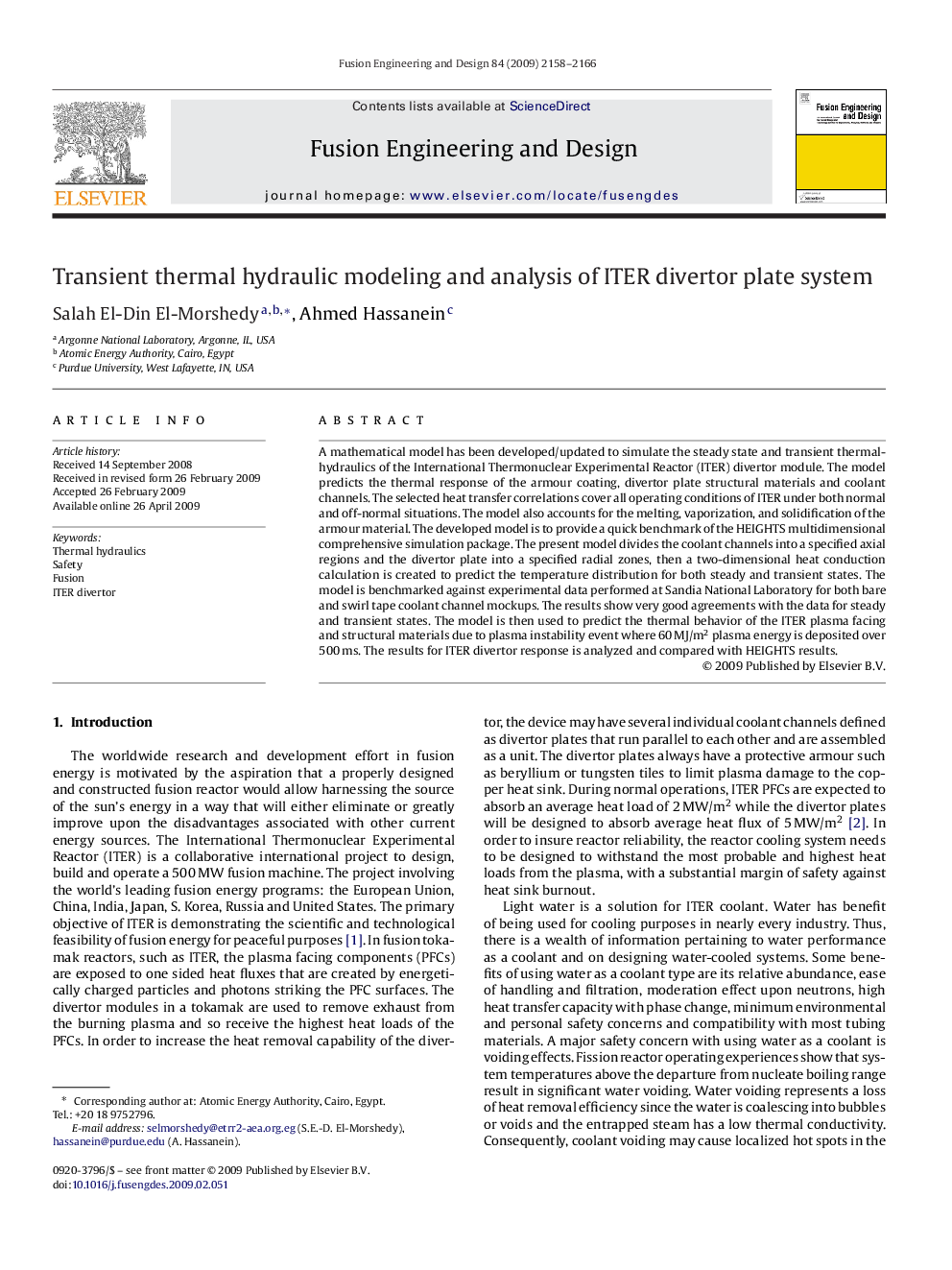| Article ID | Journal | Published Year | Pages | File Type |
|---|---|---|---|---|
| 272830 | Fusion Engineering and Design | 2009 | 9 Pages |
A mathematical model has been developed/updated to simulate the steady state and transient thermal-hydraulics of the International Thermonuclear Experimental Reactor (ITER) divertor module. The model predicts the thermal response of the armour coating, divertor plate structural materials and coolant channels. The selected heat transfer correlations cover all operating conditions of ITER under both normal and off-normal situations. The model also accounts for the melting, vaporization, and solidification of the armour material. The developed model is to provide a quick benchmark of the HEIGHTS multidimensional comprehensive simulation package. The present model divides the coolant channels into a specified axial regions and the divertor plate into a specified radial zones, then a two-dimensional heat conduction calculation is created to predict the temperature distribution for both steady and transient states. The model is benchmarked against experimental data performed at Sandia National Laboratory for both bare and swirl tape coolant channel mockups. The results show very good agreements with the data for steady and transient states. The model is then used to predict the thermal behavior of the ITER plasma facing and structural materials due to plasma instability event where 60 MJ/m2 plasma energy is deposited over 500 ms. The results for ITER divertor response is analyzed and compared with HEIGHTS results.
